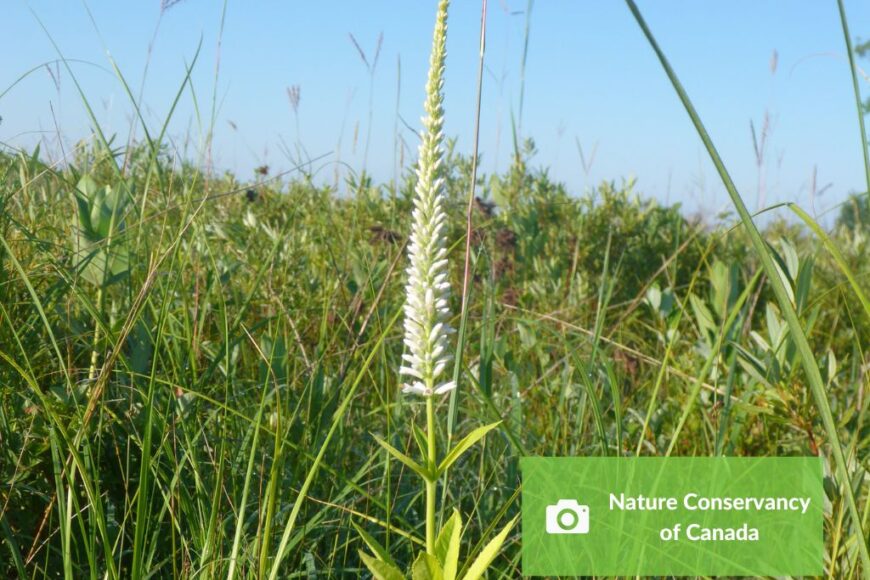Dawson Trail Dispatch, written by Norm Gregoire, August 2023
Page 8 https://issuu.com/dispatch222/docs/dawson_trail_dispatch_august_2023
The tall-grass prairie has something to see at any time of year, and the month of August is the best time to visit if you have an interest in witnessing the incredible variety of native prairie flora. After all, this is what the tall-grass prairie is renowned for! The array of colours and scents is amazing. Also, just as impressive are the variety of grasses, such as prairie cord grass and big blue stem, maybe even more incredible are the heights to which these grasses can grow. By the end of August, some grasses will be nearing their full height, which can grow over two meters! In the tall-grass prairie, you may be familiar with many of the species you see; however, there are some species that are much harder to see outside of the Manitoba Tall Grass Prairie Preserve. The Manitoba Tall Grass Prairie Preserve is a safe haven for many of these native species and even for at-risk species such as Culver’s root.
Culver’s root was named after Dr. Culver, who was an early eighteenth-century physician who recommended the plant for various medicinal uses. Culver’s root was prescribed as an effective laxative, used for liver and gallbladder disorders, and used for various gastrointestinal problems. It should be noted that Culver’s root can be toxic if used incorrectly. The plant is protected under the Manitoba Endangered Species and Ecosystem Act, so harming the species is illegal.
Culver’s root is another tall species found in the tall-grass prairie. This perennial measures about 1 to 1.5 meters in Manitoba, with spikes of tiny pale pink, purple, or white flowers that bloom from July through August. The leaves grow in groups (called whorls) of 3–7, are serrated, and usually occur in widely spaced groups along the stem. As the only member of its genus (Veronicastrum) in Manitoba, Culver’s root is unlikely to be confused with other species. Everywhere that I have seen Culver’s root in the tall-grass prairie, it has always stood out as a unique plant.
This species at risk grows on the edges of prairie and mixed-meadow habitat that is moist and partially shaded. In Manitoba, they are found in ditches and along fence lines and road allowances; therefore, they are susceptible to the practices that go into maintaining these areas.
Culver’s root is one of twenty-eight species at risk that we can find in the tall-grass prairie. This ecosystem is home to over one thousand species (a conservative estimate), and every time you visit this magnificent native prairie, you will discover something new. If you are interested in learning more about this landscape and the species that call it home, August is the perfect time for a visit, and there is even a great opportunity to learn about everything tall-grass prairie-related from experts in their field.
Prairie Day
Prairie Day is an exceptional chance for the public to experience the tall-grass prairie in person with guided walks in the morning and presentations in the afternoon. These special activities take place on the second Saturday of August, so mark Prairie Day on your calendar for August 12th this year.
Guided walks will be about an hour long. Meet at the Prairie Shore Interpretive Trail (6 km west of Gardenton on PR 209).
Lunch will be hosted at Gardenton Park, catered by their exceptional volunteers. Please bring a lawn chair or blanket to sit in the shade of the oak trees for the afternoon presentations.
Admission: $10.00 for adults, free for children 12 years of age and under.
If you have any questions, please contact Norm Gregoire at info@sharedlegacymb.ca.

